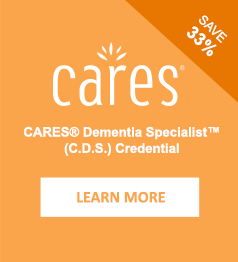What is Coronary Heart Disease
What Is Coronary Heart Disease?
Coronary heart disease (CHD), also called coronary artery disease, is a condition in which plaque (plak) builds up inside the coronary arteries. These arteries supply oxygen-rich blood to your heart muscle.
Plaque is made up of fat, cholesterol, calcium, and other substances found in the blood. When plaque builds up in the arteries, the condition is called atherosclerosis (ATH-er-o-skler-O-sis). The buildup of plaque occurs over many years.
Over time, plaque hardens and narrows your coronary arteries. This limits the flow of oxygen-rich blood to your heart muscle.
Eventually, an area of plaque can rupture (break open). This causes a blood clot to form on the surface of the plaque. If the clot becomes large enough, it can mostly or completely block blood flow through a coronary artery.
If the flow of oxygen-rich blood to your heart muscle is reduced or blocked, angina (an-JI-nuh or AN-juh-nuh) or a heart attack may occur.
Angina is chest pain or discomfort. It may feel like pressure or squeezing in your chest. The pain also may occur in your shoulders, arms, neck, jaw, or back. Angina pain may even feel like indigestion.
A heart attack occurs if the flow of oxygen-rich blood to a section of heart muscle suddenly becomes blocked. If blood flow isn’t restored quickly, the section of heart muscle begins to die. Without quick treatment, a heart attack can lead to serious problems and even death.
Over time, CHD can weaken the heart muscle and lead to heart failure and arrhythmias (ah-RITH-me-ahs). Heart failure is a condition in which your heart can’t pump enough blood to meet your body’s needs. Arrhythmias are problems with the rate or rhythm of the heartbeat.
Outlook
CHD is the most common type of heart disease. In the United States, CHD is the #1 cause of death for both men and women. Lifestyle changes, medicines, and medical procedures can help prevent or treat CHD and may reduce the risk of related health problems.
How Can Coronary Heart Disease Be Prevented or Delayed?
Taking action to control your risk factors can help prevent or delay coronary heart disease (CHD). Your risk for CHD increases with the number of risk factors you have.
One step you can take is to adopt a healthy lifestyle. Following a healthy diet is an important part of a healthy lifestyle.
A healthy diet includes a variety of fruits, vegetables, and whole grains. It also includes lean meats, poultry, fish, beans, and fat-free or low-fat milk or milk products. A healthy diet is low in saturated fat, trans fat, cholesterol, sodium (salt), and added sugar.
The National Heart, Lung, and Blood Institute’s (NHLBI’s) Therapeutic Lifestyle Changes (TLC) and Dietary Approaches to Stop Hypertension (DASH) are two programs that promote healthy eating.
If you’re overweight or obese, work with your doctor to create a reasonable weight-loss plan. Controlling your weight helps you control CHD risk factors.
Be as physically active as you can. Physical activity can improve your fitness level and your health. Talk with your doctor about what types of activity are safe for you.
For more information about physical activity, go to the Health Topics Physical Activity and Your Heart article and the NHLBI’s “Your Guide to Physical Activity and Your Heart.”
If you smoke, quit. Smoking can damage and tighten blood vessels and raise your risk for CHD. Talk with your doctor about programs and products that can help you quit. Also, try to avoid secondhand smoke.
For more information about quitting smoking, go to the Health Topics Smoking and Your Heart article and the NHLBI’s “Your Guide to a Healthy Heart.”
Know your family history of health problems related to CHD. If you or someone in your family has CHD, be sure to tell your doctor.
If lifestyle changes aren’t enough, you also may need medicines to control your CHD risk factors. Take all of your medicines as prescribed.
For more information, visit the National Heart Lung and Blood Institute (NHLBI) at www.nhlbi.nih.gov.
